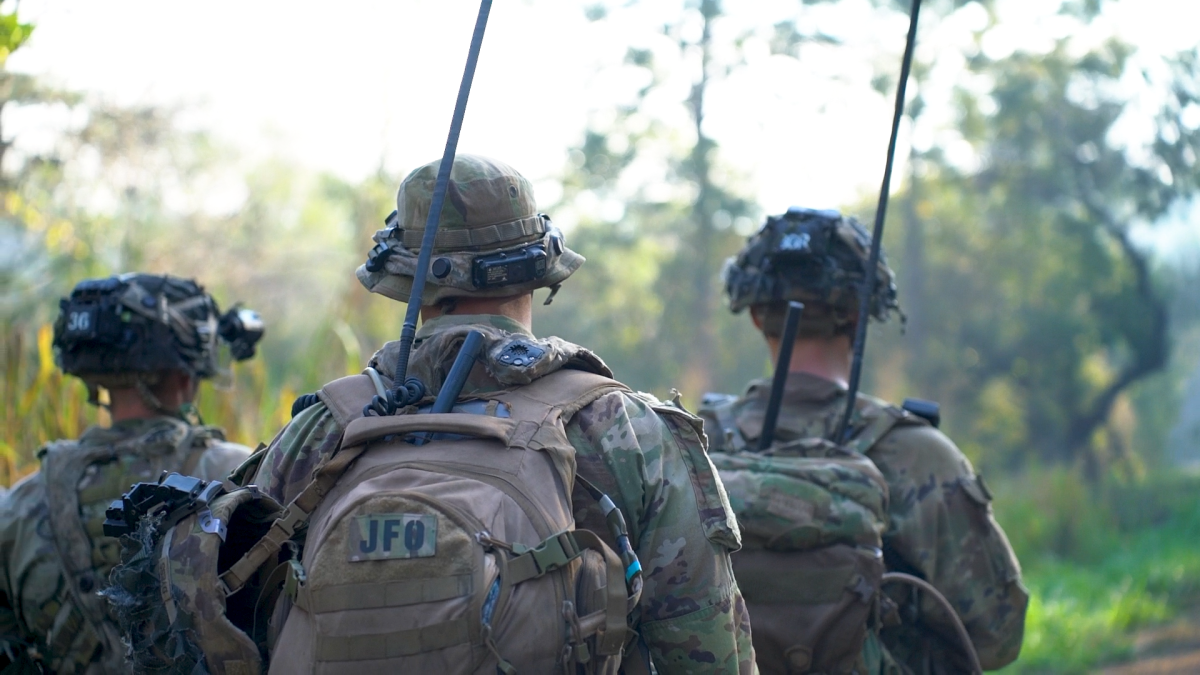New Army network leader wants more predictive tools for data

A month into his job looking into the future needs to improve the Army’s communications network, Maj. Gen. Patrick Ellis is interested in applying predictive tools for modeling data to improve commanders’ decisions, faster.
Ellis began his role as director of the network cross-functional team in July, having most recently been deputy chief of staff, G-3, for Army Europe-Africa. He also previously served with the 7th Infantry Division in the Pacific and I Corps. He took over for Maj. Gen. Jeth Rey, who was nominated for a third star and to be the next deputy chief of staff, G6, of the Army.
This operational experience has provided Ellis a unique view of the issues facing commanders and units now that he is charged with helping drive future requirements for the network.
“I moved straight over to Europe and got to really watch firsthand the Ukrainians and the Russians and how that conflict was unfolding,” he said in an interview. “The way that we enable commanders and the way that we’re going to have to fight our command post in the future, I think I have a little bit more of an opinion about that now that I’m hopeful I can share with the team here on the acquisition side too. It’s not that folks don’t have the perspective, it’s just been a little bit more recent.”
The Army has been on a multi-year journey dating back to 2017 and 2018 to devise a more flexible and operationally relevant network.
One of the key technologies Ellis wants to focus on is the predictive piece of data for building operational models.
He explained that when organizations conduct war games or plan for future courses of action, much of that is still reliant on Cold War-era tools such as wooden blocks and spreadsheets. But now, with modern tech, the data being collected can provide much more accurate models to run these assessments at a faster pace.
“You don’t have to have guys making multiple decisions and take three days to run a wargame that you can run in a simulation or a gaming-style engine that you can run in a couple of hours,” Ellis said. “I think that’ll help some of our commanders. It’s not going to replace them. It’s going to help our commanders make more facts-based, informed decisions. I’m excited about that technology. As we get data organized, I think that’s going to be absolutely a powerful tool that we’re going to get in the hands … of our commanders in the near future.”
The Army has been moving to become more data centric, now one of the secretary’s top objectives and a big focus for Ellis’ predecessor.
He also noted he wants to ensure requirements for the network aren’t too prescriptive, which can box-in the eventual solution such that it ends up being too limited to provide soldiers what they need on a highly dynamic battlefield.
“It’s about keeping the requirements general enough so that we can basically almost like Lego blocks, like mission command blocks, that we can give organizations the structure,” he said. “There’s enough flexibility in the requirements documents where you can give a commander a set of mission command Lego blocks and he can build what he wants out of that. He can structure it the way that makes sense to him and to his formation at that particular time, because all of our divisions are different.”
While officials want to allow units enough flexibility to make systems work to their own operational concepts, schemes of maneuver or environment they’re operating in, the tools still must be interoperable so one slice of the Army’s systems can still talk with everything else in the service as well as joint and foreign partners.






